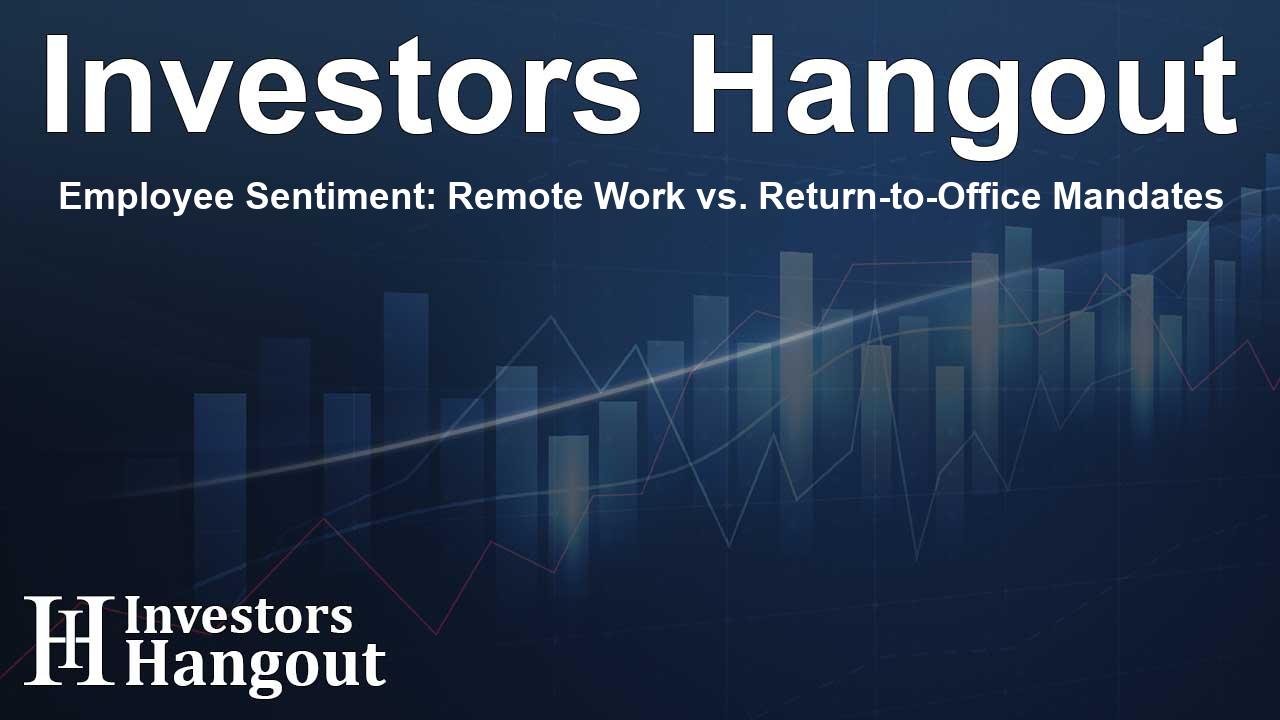Employee Sentiment: Remote Work vs. Return-to-Office Mandates

Introduction to the Study Findings
A recent survey by FTI Consulting highlights a significant shift in employee preferences, revealing that 70% of U.S. workers employed in remote or hybrid roles are open to seeking new job opportunities if compelled to adhere to strict return-to-office (RTO) policies. This finding signals changing sentiments around work flexibility and the evolving demands of the modern workforce.
Survey Overview and Methodology
FTI Consulting commissioned Southpaw Insights to survey 1,000 individuals working in corporate or home office environments regarding their perceptions of RTO mandates. The results show a clear divide in employee sentiment based on their work arrangements.
Key Observations from the Survey
According to the gathered data, nearly one-third of office workers express enthusiasm for returning to in-person work, citing enhanced productivity and collaboration opportunities. Among those who favor returning to the office, 60% value the sense of community it fosters, while 53% feel they would be more effective in a traditional office setting.
Implications for Employers
As companies anticipate enforcing RTO policies, leaders must acknowledge the nuances underlying employee satisfaction. Joshua Herrenkohl, Senior Managing Director at FTI Consulting, emphasizes the importance of understanding various factors that influence worker perceptions about office mandates, including industry type, company size, and personal circumstances.
Understanding Work Arrangements
The current work arrangement significantly impacts employee attitudes towards returning to the office. The findings indicate that 45% of remote workers rank their ability to work from home or in a hybrid format as a high priority for their job satisfaction. Conversely, only 15% of those who primarily work in-office feel the same way.
The Likelihood of Job Switching
The survey reveals that 74% of fully remote employees would consider searching for new roles if required to return to the office full time. This figure drops to 62% among hybrid workers. Interestingly, while 12% of fully remote workers are unwilling to return to in-office work, a notable 38% express eagerness about the possibility.
Factors Influencing Employee Preferences
Profession and company size emerge as critical influencers in employee reactions to RTO rules. Interestingly, those in industries such as architecture and engineering show the highest acceptance toward RTO, with 94% expressing a positive outlook on returning to the workplace. In contrast, only 51% of technology and telecommunications employees share a similar sentiment.
Response Discrepancies by Company Size
The survey highlights how company size influences employee responses to potential RTO mandates. Workers in mid-sized companies are notably more likely to explore other job opportunities if faced with RTO, with 46% expressing discontent, compared to only 34% among those in large corporations.
The Role of Demographics
Demographic breakdowns further reveal varying readiness to adapt to RTO policies. For instance, younger generations, particularly Gen Z, display higher enthusiasm for returning to work environments compared to older generations, with 42% of Gen Z respondents expressing excitement.
Family Considerations
Workers with children are also more optimistic about returning to the office, with 41% indicating excitement compared to 31% of those without children. This indicates that family obligations may play a role in workers' desires for a flexible work environment.
Conclusion: Adapting to Employee Needs
In light of these findings, the message is clear: employers must adapt their office environments to retain talent. Ingrid Rivera Noone of FTI Consulting stresses that appealing to younger employees through upgraded office spaces and accommodating policies is essential for organizations hoping to attract and maintain top performers in a competitive landscape.
Frequently Asked Questions
What percentage of remote workers would leave their jobs over RTO rules?
According to the survey, 70% of remote or hybrid workers may seek alternative employment if forced to return to the office full time.
Why do some employees prefer remote work?
Many employees prefer remote work due to increased flexibility, improved work-life balance, and the ability to avoid commuting.
How does company size affect responses to RTO mandates?
Employees at mid-sized firms are more likely to seek new job opportunities compared to those at larger companies when faced with RTO mandates.
What demographic trends were observed in the survey?
Younger employees, particularly Gen Z and Millennials, showed greater enthusiasm for returning to the office compared to older generations.
What can employers do to retain talent in light of these findings?
Employers should consider enhancing workplace amenities and offering flexible working conditions to meet evolving employee preferences.
About The Author
Contact Thomas Cooper privately here. Or send an email with ATTN: Thomas Cooper as the subject to contact@investorshangout.com.
About Investors Hangout
Investors Hangout is a leading online stock forum for financial discussion and learning, offering a wide range of free tools and resources. It draws in traders of all levels, who exchange market knowledge, investigate trading tactics, and keep an eye on industry developments in real time. Featuring financial articles, stock message boards, quotes, charts, company profiles, and live news updates. Through cooperative learning and a wealth of informational resources, it helps users from novices creating their first portfolios to experts honing their techniques. Join Investors Hangout today: https://investorshangout.com/
The content of this article is based on factual, publicly available information and does not represent legal, financial, or investment advice. Investors Hangout does not offer financial advice, and the author is not a licensed financial advisor. Consult a qualified advisor before making any financial or investment decisions based on this article. This article should not be considered advice to purchase, sell, or hold any securities or other investments. If any of the material provided here is inaccurate, please contact us for corrections.
